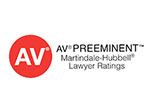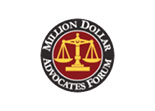Tires are one of the three main expenses for commercial fleets, along with labor and fuel. Unfortunately, they are often ignored, risking accidents caused by damaged or under-inflated tires. According to a FMCSA study, tire issues account for 30% off all truck-related accidents.
Common causes of tire failures:
- Punctured Tires. If you run over a sharp object going 60 MPH, your tire is likely to blow.
- Blunt Force Contact. Hitting a pothole at high speed can pop the tire. The same is true for hitting a curb.
- Improper Air Levels. If your tire’s air pressure is too low, the sides of your tire flex too much, overheat and split apart. Overinflated tires will have a weak grip.
- Aged and Worn Out Tires. Old and worn down tires are the most susceptible to blowouts.
- Overloading. Overloading a vehicle driving on tires that do not meet the application’s load rating requirements is asking for trouble. The best way to prevent exceeding the load rating is to check the tire’s load rating and be sure it matches the application.
- Defective or Badly Designed Tires. A tire can fail to do its job due to a manufacturing or design defect. Almost all tires made today are steel-belted radial tires. The most common form of failure is for the tread to separate.
Commercial Vehicles are federally regulated for Safety
The Federal Motor Carrier Safety Administration imposes several duties on truck companies and their drivers. The duty to maintain safe tires places strict prohibitions on the type of tires which are allowed.
- 393.75 Tires.
(a) No motor vehicle shall operate on any tire that:
- Has body ply or belt exposed through the tread or sidewall,
- Has any tread or sidewall separation,
- Is flat or has a known leak, or
- Has a cut to the extent that the ply or belt material is exposed.
Tread groove: Tires used on the front wheels of a bus or truck shall have a tread groove at least 4/32 of an inch when measured from the tread groove.
Tread measurement: No tires shall have treads less than 2/34 of an inch when measured from the tread groove.
Trucking companies with a permit are responsible for all accidents involving a truck that has its placard or name displayed on the vehicle.
Any commercial truck involved in an accident must be inspected by a certified truck inspector before it is removed from the scene. This report reveals the condition of all of the essential mechanical parts of the truck and trailer. These reports are not part of a local police report. Instead, they must be obtained from the appropriate government agency.
Defective Tires
Any product with some defect may qualify as a defective product.
However, most state laws require the following to be true to file a negligence claim against the manufacturer.
- A Manufacturing defect(s) is an error in assembly or the manufacturing process of a product causing the product to become unsafe.
- A design defect is a defect in the product design that causes the product to be dangerous and creates a hazard for users.
- Failure to warn – This is a defect in terms of the way a manufacturer instructs consumers to use their product or products. If the correct use of the product may injure consumers and fails to mention this, it is negligence on the manufacturer’s behalf.
For a successful product liability claim against a manufacturer, you must prove the following elements for a negligence claim:
- You were injured or suffered a loss;
- The product is defective;
- The defect caused the injury; and
- The product was used as it was intended.
Anyone who gets behind the wheel of a truck has a duty to drive safely and avoid reasonable risks. If failure to drive safely results in an accident, the negligent driver could be found liable for the damage caused. If a defect in the truck tire caused the accident, the negligent manufacturer could be found liable for the damage caused.
If you are injured in an accident involving a commercial vehicle, contact the experienced personal injury attorneys at Walton Telken Injury Attorneys for a free consultation.












